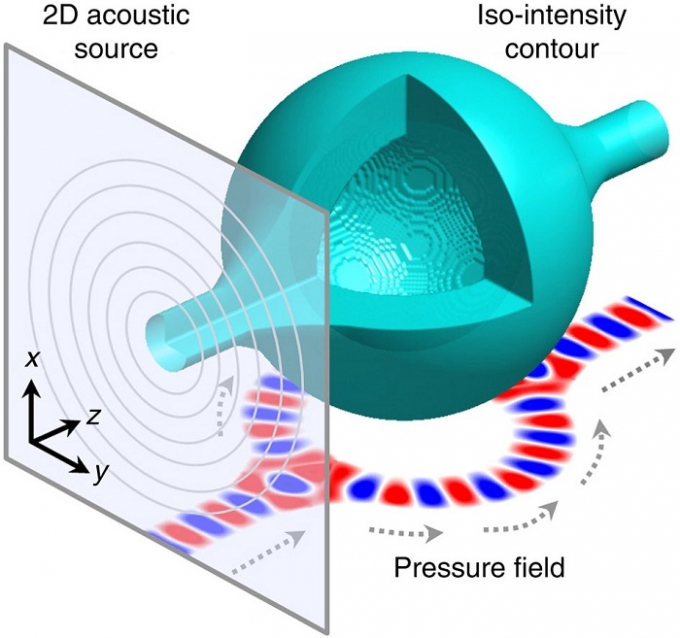It looks like you're using an Ad Blocker.
Please white-list or disable AboveTopSecret.com in your ad-blocking tool.
Thank you.
Some features of ATS will be disabled while you continue to use an ad-blocker.
7
share:
There's a new wave of sound on the horizon carrying with it a broad scope of tantalizing potential applications, including advanced ultrasonic imaging and therapy, acoustic cloaking, and levitation and particle manipulation. Researchers with the U.S. Department of Energy (DOE)'s Lawrence Berkeley National Laboratory (Berkeley Lab) have developed a technique for generating acoustic bottles in open air that can bend the paths of sound waves along prescribed convex trajectories.
In this latest project, three members of Zhang's research group, Peng Zhang, Tongcang Li and Jie Zhu, created an acoustic "bottle" that features a three-dimensional curved shell, in which a wall of high acoustic pressure surrounds a null pressure region in the middle. Sound waves forming the bottle are concentrated into a beam that travels through the high pressure wall of its curved shell. The sound waves are generated by an array of loud speakers, 1.5 centimeters in diameter and spaces 2.5 centimeters apart, operating at a frequency of 10 kilo Hertz (kHz) and can be launched along a designated trajectory by precisely adjusting the phase profile of the speaker array.
Because the high pressure wall of the acoustic bottle exerts a pulling force, there are no sound waves passing through the null pressure interior of the bottle and the bottle can be used for acoustic trapping. Furthermore, the bottle beam is not influenced by any obstacle placed inside the bottle and can even restore itself when an obstacle blocks its path, as the researcher demonstrated with a steel rod.
More at source

Nice invention, soon you wont be able even to trust what you hear
new topics
-
Happy Thanksgiving to ATS
General Chit Chat: 1 hours ago -
Simple Thanksgiving
Food and Cooking: 8 hours ago -
Trump could make a peaceful American Revolution
US Political Madness: 11 hours ago
7
